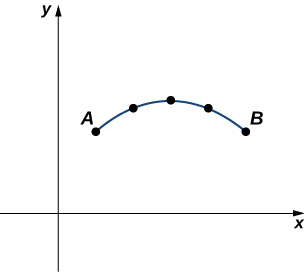| << Chapter < Page | Chapter >> Page > |
Then a Riemann sum for the area is
Multiplying and dividing each area by gives
Taking the limit as approaches infinity gives
This leads to the following theorem.
Consider the non-self-intersecting plane curve defined by the parametric equations
and assume that is differentiable. The area under this curve is given by
Find the area under the curve of the cycloid defined by the equations
Using [link] , we have
Find the area under the curve of the hypocycloid defined by the equations
(Note that the integral formula actually yields a negative answer. This is due to the fact that is a decreasing function over the interval that is, the curve is traced from right to left.)
In addition to finding the area under a parametric curve, we sometimes need to find the arc length of a parametric curve. In the case of a line segment, arc length is the same as the distance between the endpoints. If a particle travels from point A to point B along a curve, then the distance that particle travels is the arc length. To develop a formula for arc length, we start with an approximation by line segments as shown in the following graph.

Given a plane curve defined by the functions we start by partitioning the interval into n equal subintervals: The width of each subinterval is given by We can calculate the length of each line segment:
Then add these up. We let s denote the exact arc length and denote the approximation by n line segments:
If we assume that and are differentiable functions of t, then the Mean Value Theorem ( Introduction to the Applications of Derivatives ) applies, so in each subinterval there exist and such that
Therefore [link] becomes
This is a Riemann sum that approximates the arc length over a partition of the interval If we further assume that the derivatives are continuous and let the number of points in the partition increase without bound, the approximation approaches the exact arc length. This gives
When taking the limit, the values of and are both contained within the same ever-shrinking interval of width so they must converge to the same value.

Notification Switch
Would you like to follow the 'Calculus volume 3' conversation and receive update notifications?